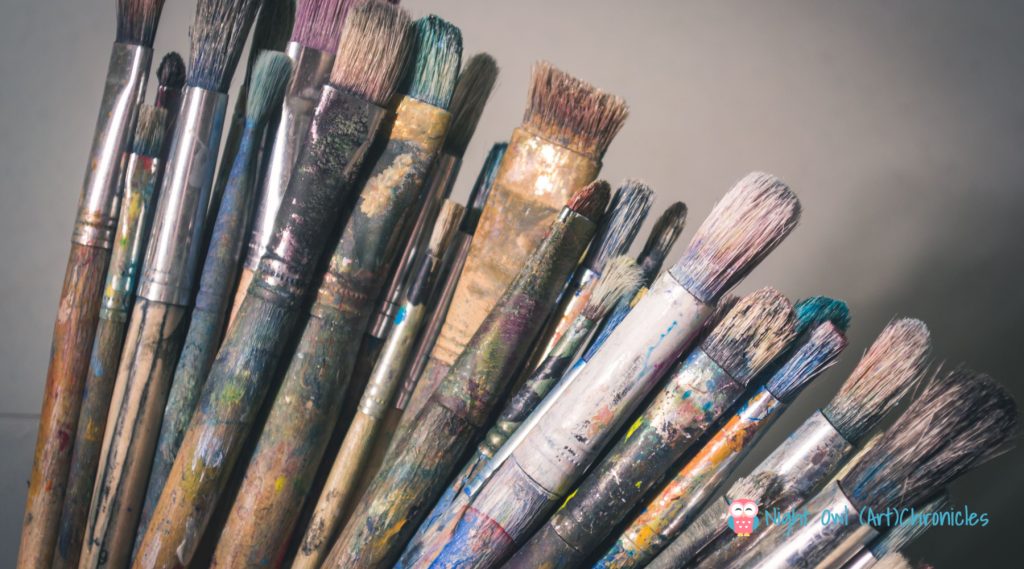Hello there, art aficionados! Ever found yourself standing in an art supply store, facing a wall of paint brushes, utterly perplexed? You're not alone. That bewildering moment is a universal experience for artists, both novices and seasoned professionals alike. So, today, we're going to simplify things, specifically focusing on acrylic paints — the versatile medium beloved by many. Let's embark on the hunt for the best paint brushes for acrylic paint!
Acrylics are unique, a kind of "jack-of-all-trades" in the paint world. They can act like watercolors, or they can act like oils. Thus, the brush you select can make a world of difference in your painting process. So, what are the best paint brushes for acrylic paint?

The Essentials: Brush Types and Their Uses
Let’s ago ahead and dive into the heart of the matter — the different types of brushes and their unique uses. It's just like choosing the right superhero for the mission; each brush has its superpowers. From creating broad strokes to adding minute details, these heroes of the art world can do it all. So, strap in and let's meet the all-stars of the painting universe.
Materials Matter: Bristle Type Breakdown
The composition of a brush is like the secret ingredient in grandma's special recipe; it's what makes the magic happen with your acrylic paint. It's the bristles that waltz gracefully across your canvas, creating mesmerizing strokes of brilliance. Ready to know more? Allow me to pull back the curtain and reveal the personalities of the most common bristle types:
Caring for Your Brushes
Purchasing the best paint brushes for acrylic paint is one thing, but maintaining them is another. Well-maintained brushes can last for years, providing the same level of detail and precision as they did when you first used them.
Tech-savvy artist and teacher Roben-Marie Smith offers some insights into how to safely dispose of the acrylic paint waste leftover on our brushes and in our water:
When cleaning acrylic paint, it is super important to remember to never pour it down the drain or into the trash. Instead make sure to place a small bucket, pail or bowl under the faucet as you clean your brushes. If you’re wondering what to do with the buckets/bowls of dirty acrylic paint water, then take a look at this article that outlines a DIY solution to remove the acrylic paint solids from your rinse water. They also offer another article on waste disposal.
My Top 5 Picks: Best Paint Brushes for Acrylic Paint
There are a plethora of options out there, and it can be a tough nut to crack. Here are our top 5 picks for the best paint brushes for acrylic paint.
Mixed media artist Karen Campbell writes that Princeton artist brushes are her favorite. (She also has some fun photos videos on her post -- I'm loving the Bob Ross cutout!):
Even though I've got a GIANT stash of acrylic brushes, there are really only a couple of favorites I always reach for. I love my Princeton Artist Brushes for acrylic painting, in either the "bright" or "filbert" cut... I like my acrylic brushes to be super stiff with coarse, short hair. The stiffer, the better! I feel like when you're blending wet on wet, or wet on dry - you need your brush to be able to move around and "be the boss" of your paint! If the brush is too soft - you can't get anything accomplished! LOL!!
I totally feel this sentiment -- especially when I'm working on a larger piece and really need to make things happen on the canvas!
FAQs About Best Paint Brushes for Acrylic Paint
Well, that's a yes and no situation. Expensive brushes often last longer and hold their shape better, but if you're just starting out or experimenting, there's no harm in beginning with a more affordable set.
You can, but keep in mind that acrylic paint is harsher on brushes than oil paint. A brush designed specifically for acrylics will typically be more durable and resilient.
There's no magic number, but a basic set might include a couple of sizes each of flat, round, and filbert brushes. If you want to be certain, I recommend you decide what techniques you'll need to accomplish your goals and which brushes suit those purposes. If you're not sure, you might consider starting out taking some classes from professional artists who can provide you with a list of supplies you need for your project and help you understand the purpose and proper usage of each tool.
As a rule of thumb, larger brushes are used for broad strokes and filling in large areas, while smaller brushes are used for details and fine lines.
With proper care, high-quality brushes can last for years. Look out for signs of wear like splitting or fraying, which suggest it's time for a replacement.
While technically possible, it's not recommended. Acrylics are heavier than watercolors and can quickly damage the soft hairs of a watercolor brush.
So, there you have it, folks! Acrylic painting is a journey of exploration, and the right paint brushes are your trusty companions along the way. Remember, the best paint brushes for acrylic paint are the ones that feel right in your hand and align with your artistic style. Now, go ahead, and paint your heart out!










